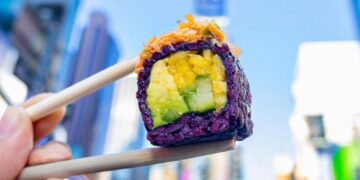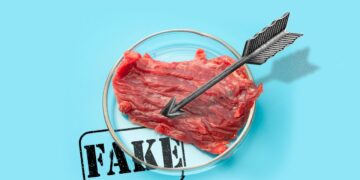[ad_1]

Jean-Yves Bardin
It’s not every day that the first vintage from a brand-new winery receives 100 points from Robert Parker’s Wine Advocate, especially for a white wine, but Ivan Massonnat was able to do just that with the release of his Domaine Belargus 2018 Quarts du Chaume. Although he grew up helping his grandfather harvest grapes in the Savoie, Massonnat didn’t drink wine until the age of 20. This drew him into an obsession that, unlike most gentlemen who make a fortune in private equity, may have implications far beyond the walls of his own wine cellar. Five years in, Domaine Belargus is one of the most celebrated wineries in his home country, with Massonnatt recently being named one of France’s 50 best winemakers by Le Figaro. Seeing enormous potential in the Loire Valley, and especially the area around Anjou, he would like to see the elevated style of Chenin Blanc become the standard bearer rather than the exception, bringing the renown of this region back to the days before the French Revolution, when it was home to France’s finest wines.
“Anjou was a very strong French province in the medieval times. For example, the Count of Anjou in the 12th century was Henry II, King of England,” Massonnat tells Robb Report. “Until the phylloxera crisis, Chenin reigned supreme, and the region was known for its fine, age-worthy white wines made of Chenin, either dry or sweet, which were served on royal tables all across Europe.” Passionate about Anjou and its Chenin, Massonnat points out that the Loire has all the hallmarks of a great region such as Burgundy including a long history of winemaking and two signature grapes, one red and one white, Cabernet Franc and Chenin Blanc, which he, like most French speakers, shortens to just Chenin.

Tending to the land in Ruchères
Estelle Offroy
After buying a vacation house in the area 20 years ago, Massonnat was drawn to Anjou and the subregion called Anjou Noir (thanks to its dark schist soils) because of its similarity to Burgundy. “It is home of the oldest, smallest, and most prestigious appellations of Chenin in the Loire,” he says. These include Coulée de Serrant, Roche-aux-Moines, Savennières, Quarts-de-Chaume, Chaume, and Bonnezeaux, which are all within a 12-mile radius of Angers. Fascinated by the “mosaic of micro-terroirs,” he decided to create an estate dedicated to Chenin. Because Anjou is known for its sweet versions of the grape, which have fallen out of style, there were quite a few vineyards for sale. “So many, actually, that I could dream of acquiring truly exceptional plots, a bit like diamonds in the rough,” he says. After a search that began in 2015, he was able to purchase three different properties and vineyards in what he calls the “hot spots of Anjou Noir.”
One of the sites he acquired, the steep and rocky Coteau des Treilles vineyard, was previously owned by renowned winemaker Jo Pithon, who continues working with Massonnat as a consultant. We visited last summer, and it is truly breathtaking. It’s hidden within a wooded natural reserve that is home to over 2,200 natural species, including the blue Lysandra bellargus butterfly for which the domain is named. This vineyard, like his others, is farmed organically and biodynamically; Massonnat finds biodynamic wines, especially whites, to be more vibrant and energetic. “I am convinced that the vine is a living entity and that if it is growing in a diverse, balanced environment it will produce better, more intense fruit flavors,” he says.
One of Massonnat’s goals with Belargus was to “break the glass ceiling of the Loire,” charging a price he felt was more commensurate with the wine’s quality. The first vintage of Belargus was released with some bottles above the $100 mark and although Massonnat was expecting market pushback, he says that what happened next was like a fairy tale. “It was an instant success. Thanks to the incredible scores and reviews our first vintage gathered, we were identified as a ‘bargain’ by Burgundy buyers.”

The renowned winemaker who previously owned the Treilles vineyard still works with Massonnat
Domaine Belargus
Joking that he doesn’t personally ride the tractor, Massonnat has high praise for his 15-person team, which includes Pithon, a pioneer of organic viticulture in the Loire, in a consulting role alongside winemaker Adrien Moreau, who previously worked at Cheval Blanc, Haut-Brion, Harlan Estate, and Roederer. He also employs a naturalist who oversees maintaining biodiversity in the vineyards and surrounding woods and is responsible for cover crops and beekeeping. That said, having sold his remaining shares in his private equity firm more than a year ago, Massonnat is a full-time vigneron who is involved in all aspects of production from vineyard to cellar and also personally represents Belargus throughout the more than 30 countries worldwide in which it is sold.
Domaine Belargus released its 2020 vintage in advance of the 2019, which was much smaller than usual due to frost but which Massonnat describes as having “rare intensity,” and we don’t disagree. The current releases are Domaine Belargus 2019 Ruchères, Veau, and Bonnes Blanche. Coming from a tiny walled vineyard with purple shale and slate soils, Domaine Belargus 2019 Ruchères has a lush texture and enticing saline note alongside stone fruit and floral flavors. Domaine Belargus 2019 Bonnes Blanche offers intense acidity and soft touches of fennel pollen and jasmine on the palate; it will continue to age perfectly in bottle for another seven to 10 years. Domaine Belargus 2019 Veau is a rare dry wine hailing from the Quarts-de-Charme appellation, which is better known for sweet wine. Aromas of lavender and beeswax give way to flavors of apricot and almond with a touch of sea spray set into a wine with an alluringly soft texture. If these are any indication of the Loire Valley’s overall potential, it may just reclaim its former glory within a generation.
Culinary Masters 2024
Don’t miss the food event of the year. Register for Robb Report’s Culinary Masters now. Or, for more information on Robb Report experiences, visit RR1.
[ad_2]
Source link






